
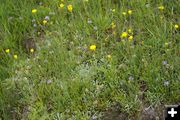
Diversity
A close look at the ground reveals a broad range of plants in this forb-dominated vegetative community, amid a sea of sagebrush.
|

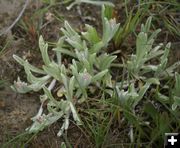
Meadow pussytoes
This sensitive plant species, the Meadow pussytoes, grows in a few locations in western Wyoming and benefits from managed livestock grazing.
|

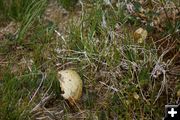
Duck egg
Newly hatched duck eggs are some of the treasures found in this meadowland in the sage.
|

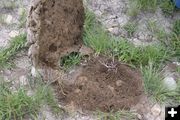
Cowpie
Sage grouse turn over dried cow manure piles to reveal the rich diversity of insects, essential for chick survival.
|

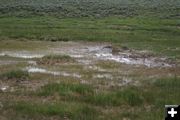
Fen
A portion of the meadow is actually a fen. A fen is a lowland area covered with water and producing sedge, coarse grasses, and other aquatic plants.
|

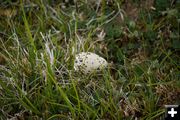
Killdeer egg
Killdeer use the meadow for nesting as well, as evident by this killdeer eggshell.
|

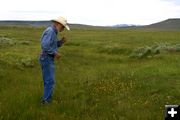
Steve scopes
Retired from the BLM, Steve Laster turns his attention once more to his favorite area of study - botany.
|

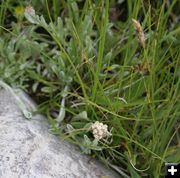
Meadow pussytoes also
Grazing pressure keeps grass species that could outcompete with forbs at bay, providing for conditions favorable to sensitive plants like the Meadow pussytoes.
|

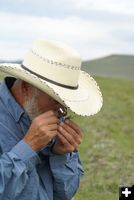
Laster examines plant
Steve Laster takes a closer look. His work has resulted in the discovery of three new populations of a sensitive plant species.
|
